Op het internet staan honderdtallen negatieve boodschappen over de bevindingen van Masaru Emoto en zijn duizenden fotografische vorostellingen van waterkristallen, die de een of andere menselijke emotie hebben ondergaan en daarna werden gefotografeerd.
Uit al deze boodschappen heb ik er slechts eentje uitgekozen, dat in wezen al de andere commentaren in zich inhoudt. En zolang er vanuit een onafhankelijk wetenschappelijk laboratorium geen positievere resultaten worden gepubliceerd die Emoto's bevindingen bevestigen, voel ik me ook verplicht om deze pseudo-wetenschappelijke rommel in het rijk der kwakzalverijen onder te brengen.
Ik beëindig met dezelfde woorden als met die van Rob Nanninga van Skepp, zijnde: "Het is moeilijk te beoordelen of Emoto een gewiekste zakenman, een oliedomme pseudowetenschapper, een gevaarlijke kwakzalver, een religieuze sekteleider of een aimabele watermysticus is. Misschien alles tegelijk. In een recent interview met 'Good Times' lijkt hij wat bescheidener te zijn geworden: 'My theory and research is not yet reached science and I should say it is more like fantasy.'"
Nu laat ik het woord over aan Kristopher Setchfield en druk hieronder de Engelse tekst integraal af. Indien jij, ondanks alles, wil blijven vasthouden aan jouw geloof - of, een Emoto wil blijven promoten - dan kan niemand jou daarvan niet tegenhouden. Tenslotte ben je die je denkt die je bent.
Are Dr. Masaru Emoto’s Fantastic Claims Actually Real?
When I first heard of Dr. Emoto’s amazing work with water crystals through his book “The Hidden Messages in Water” I was absolutely stunned. I then saw the movie “What the Bleep do we Know” and became thoroughly intrigued. I set off to conduct a research project in the chemistry department of Castleton College in Vermont to see if I could find sufficient evidence and support for Dr. Emoto’s claims to merit conducting a deeper research project to try to reproduce his work. The idea was to uncover as much information about his methods and procedures as possible to determine if is would actually be feasible to study the effect of energy healing, such as Reiki, on the formation of water crystals. I was so excited to think that I might be the first person in the world to verify his work!
So what follows is my official research paper that contains all of my findings and determinations after months of exhaustive review of Dr. Emoto’s published works. I hope that it will give you a deeper understanding and appreciation for the truth.
Sincerely,
Kristopher Setchfield, BA, Health Science - Natural Science Department - Castleton State College, Vermont -
20 December, 2005
Review and analysis of Dr. Masaru Emoto’s published work on the effects of external stimuli on the structural formation of ice crystals.
This paper surveys the wealth of information that was uncovered during investigation of Dr. Masaru Emoto’s claim that human thought has a direct observable effect on the structural formation of ice crystals. Upon initial review of Dr. Emoto’s published findings, I became very interested in the implications of his research and developed the initial concept for this research project, which was to review Mr. Emoto’s laboratory methodology to learn if it would be possible to test his hypothesis and reproduce his results at Castleton State College. Since the human body is composed of between 50% and 80% water, I could not help but wonder, “If thought affects the molecular structure of water, then what effect might thought have on the human bodies?”
However, after many hours of investigation it became increasingly clear that a superior purpose for this project was to review Mr. Emoto’s procedures and results for scientific validity. This revision in the original intent for this project has been very eye-opening and the findings have grounded my opinion of Dr. Emoto’s work in a concrete of scientific rigor and skepticism.
Dr. Emoto became a Doctor of Alternative Medicine at the Open International University for Alternative Medicine in India in 1992, and he has become famous throughout the world in the alternative medicine realm for his 1999 self-published book, The messages of water. Since that time, his narrative and collection of photos of ice crystals has been picked up by independent publishing companies and has grown into subsequent works, such as The hidden messages in water (HMW). Recently his work was featured in a highly controversial movie titled What the bleep do we know!? (Bleep) and published in an essay in The Journal of Alternative and Complementary Medicine (JACM). These thrust his work into the international spotlight and portrayed his work as proven scientific research. It was because of the notoriety gained by his books and the Bleep movie that I first learned of Emoto’s fantastic claim that he has found evidence that human thought affects ice crystal formation and that the structure and level of detail of an ice crystal is an indicator of water quality.
An ice crystal is a crystal lattice of solid water molecules that is often visible to the naked eye and commonly experienced as a snowflake. The crystal exhibits the hexagonal lattice structure that is characteristic of solid water, as illustrated in the picture on the left where two views are shown of the same ice crystal molecule–where the red balls represent the oxygen atoms, and the grey spokes represent the hydrogen atoms.
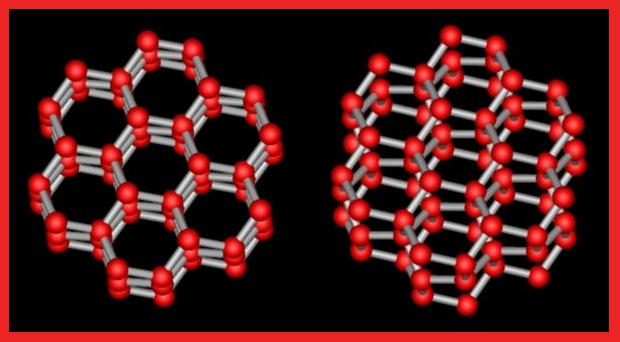
Fig. 1. Ice crystal lattice scructure (Libbrecht)
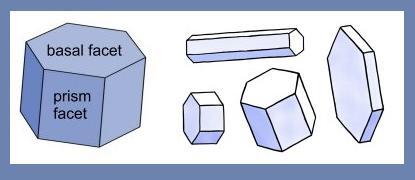
Fig. 2. Ice crystal faces
According to Kenneth Lebbrecht, chairman of the department of physics at Caltech and a leading ice crystal researcher, ice crystals form arms on the crystal faces (shown in the picture above on the right). The two hexagonal faces are known as basal faces, and the six rectangular faces are known as prism faces, and the overall shape of a crystal is determined by which faces grow arms. If the basal faces grow, a columnar crystal develops, and if the basal faces grow a plate shape will develop.
Lebbrecht’s morphology diagram below illustrates that ice crystal shape is a factor of both humidity and temperature. Temperature is the most important factor, and plates tend to form in the 0°C to -3°C and -10°C to -22°C ranges (red), while columns tend to form from -3°C to -10°C and below -22°C (green). Lower humidity tends to form simpler crystal shapes, while higher humidity tends to form more intricate crystals. It is currently not known why ice crystals form different shapes at different temperatures, as the physics of how the water molecules bond to a growing ice crystal are very complex and not well understood (Libbrecht).
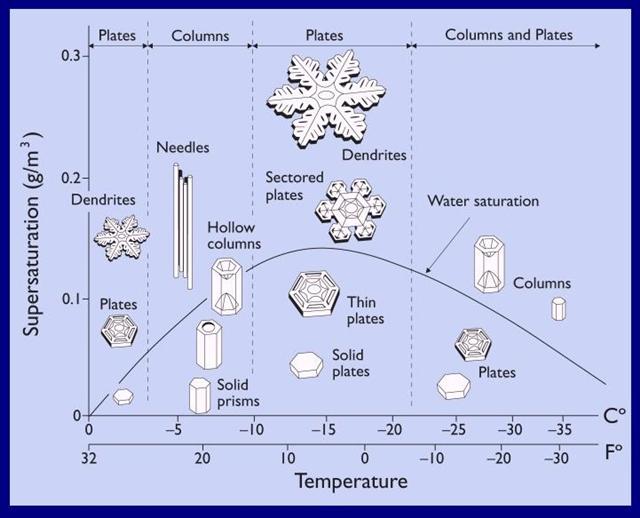
Fig.3. Morphology Diagram of Ice Crystal Formation (Libbrecht)
Emoto’s hypothesis has evolved over the years of his research. Initially Dr. Emoto claimed that high-quality water forms beautiful and intricate crystals, while low-quality water has difficulty forming crystals. According to Dr. Emoto, an ice crystal of distilled water exhibits a basic hexagonal structure with no intricate branching, as shown in the photo below, taken from Dr. Emoto’s website www.hado.net (Hado). This basic hexagonal crystal is the simplest form of an ice crystal.
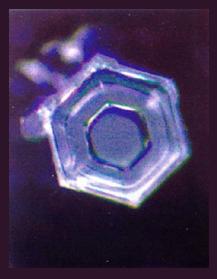
Fig. 4. Photo of Distilled Water Crystal (Emoto, Messages)
The following images (Emoto, Messages 119) show Emoto’s selected photos of ice crystal formation from tap water sources from Paris, London, and Tokyo, respectively in figure 5 and two spring water sources from Japan on the right.
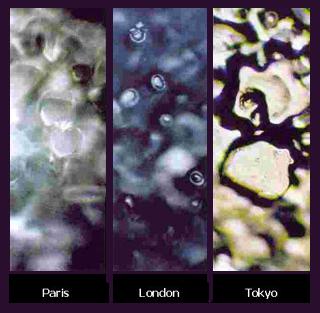
Fig.5. Photos of Tap Water Crystals (Emoto, Messages)
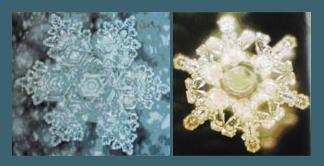
Fig. 6. Photos of Spring Water Crystals (Emoto, Messages)
While these first claims of Dr. Emoto may seem to make common sense, his subsequent claims are ever increasingly more controversial. After studying the variation in water crystals from samples taken from different locations around the world, Emoto decided to study what would happen to the formation of ice crystals from distilled water after the liquid was exposed to music.
Dr. Emoto reports that he found stunning correlations between the types of music played and the quality and beauty of the ice crystals that would form upon freezing. For instance, the crystal below on the left was observed in a sample of distilled water that had been played Beethoven’s 5th Symphony, and the crystal on the right was observed in a sample of distilled water that had been played so-called “heavy metal” music (Emoto, Messages 17). It is interesting to note that this claim closely mirrors the well-known pseudoscientific and so far unsubstantiated claim that classical music has a beneficial effect on plant growth, and rock music hinders plant growth.
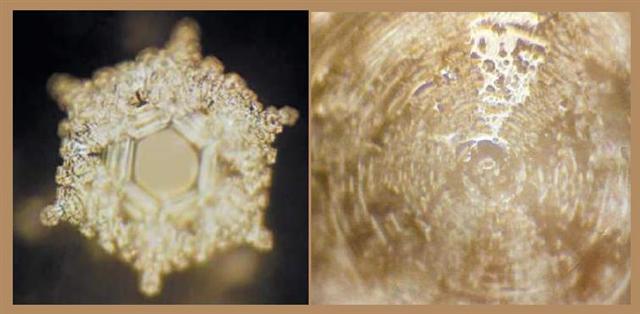
Fig.7. Distilled Water Crystals after Music (Emoto, Messages)
Following his study of the effects of music on ice crystal formation in distilled water, Dr. Emoto wondered if water crystal structure might be affected by other seemingly illogical external things, such as words written on paper. In the HMW prologue, Dr. Emoto states, “It didn’t seem logical for water to ‘read’ the writing, understand the meaning, and change form accordingly. But I knew from the experiments with music that strange things could happen.”
He began by writing phrases like “thank you” and “you fool” in various languages on paper and placing the paper under the distilled water samples, and his published photos below (Emoto, Messages 7) show a surprising result. Samples that had been exposed to the words “thank you” exhibited beautiful crystals, while samples that had been exposed to the words “you make me sick: I will kill you” would not form crystals at all.
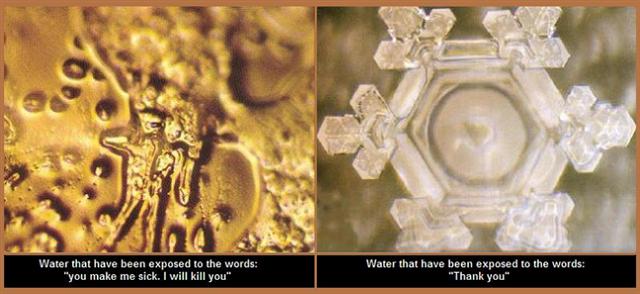
Fig. 8. Distilled Water Crystals after Spoken Words (Emoto, Messages)
Encouraged by his findings, Emoto began studying the effects of prayer, blessings, and spoken words. Not surprisingly, his results indicated that water crystal formation was also sensitive to these things, yielding his current hypothesis; “Molecules of water are affected by our thoughts, words, and feelings.” (Emoto, Messages cover)
Dr. Emoto’s published method of obtaining photographs of crystals involves a relatively simple and inexpensive process. 0.5 mL samples of liquid water from a specific sample are placed on 100 petri dishes that are then frozen and stored at a temperature of -25°C for three hours in a freezer. A sample is removed from the freezer for observation under a microscope with a camera in a room with a constant temperature of -5°C. As the microscope’s light melts the top of the sample, crystals are observed and photos are taken (Emoto, Healing 2).
As quoted in an interview with Jon Woodhouse published in the Maui News, Emoto stated, “I did not start out with any modern scientific background. I did not even know the limit of science to stop me from giving this research a chance.” Not having been educated in the scientific community, Emoto has been happy to do his “research” without accurately employing the scientific method. While he does employ the spirit of the scientific method in his research design, he makes critical mistakes in its rigor. For example, Emoto’s research does employ observation of a physical phenomenon, formulation of a hypothesis to explain the phenomenon, and testing and revising the hypothesis, but he makes the critical mistake of failing to minimize the influence of the experimenter’s bias on the outcome of the research.
Dr. Emoto’s procedure for photographing crystals has no controlled means of ensuring that experimenter’s bias is prevented or minimized. For example, his methodology does not ensure that the obtained results are not selected consciously or subconsciously by the photographer. In fact, in the Maui News interview, Dr. Emoto specifically stated, “I do not require any blind tests on any samples,” but rather he believes that “the researcher’s aesthetic sense and character is the most important aspect when taking crystal photographs.” Emoto’s belief that ice crystal formation is sensitive to human thought lead him to select technicians who would not affect crystal formation with negative thoughts over technicians who had formal research experience.
While it is possible that he did, in fact, discover that water has an observable sensitivity to external stimuli such as prayer and words, Dr. Emoto’s experimental design and clinical procedures do not prove the claim. A double blind procedure in which a photographer would not know what water sample he or she was photographing would make the claim considerably more credible.
Emoto’s procedure, while simple and direct, does not eliminate numerous possible sources of error. Ice crystal structural formation is dependent on numerous environmental factors, the most important of which are temperature and humidity. While Emoto minimized some possible sources of error by conducting his studies in the same room with the same sample sizes, the same freezer and same microscope each time, other possible sources of error were not addressed. For example the Petri dishes were not sealed to prevent contamination or disturbance by the operator or environment; A simple thing such as the photographer’s breath while using the microscope could affect the warming rate of the frozen sample and temperature of crystal formation, thus affecting the structure of the resultant crystal.
As Dr. Emoto has not published the entirety of his photographs, it is unknown if he ruled out or ignored crystals that did not support his hypothesis. HMW and the JACM article only contain selected photos that support his claims, and we are left to wonder what the rest of the pictures look like. His procedures state that in any given test he will photograph 100 petri dish samples, yet only one picture per test is provided to the public. Emoto also fails to publish any findings that contradict his claim (or that were at least inconclusive). No errors are currently published in the JACM article, his websites, or his HMW book that my research has been able to uncover.
It is also worth noting that Dr. Emoto’s procedures indicate that his samples are frozen at -25°C, and his ice crystals are formed at -5°C. According to Figure 3, these temperatures should produce mostly column crystals rather than plate crystals, yet not one of Emoto’s published photos show a column crystal. This makes Dr. Emoto’s data suspect (as they appear to conflict with the findings of well-respected researcher) and indicates the possibility that Emoto excluded non-supportive data from his publications.
While Emoto has published his claim in one peer reviewed journal, it has neither been substantiated nor disproved by research scientists. It is worth noting that Emoto’s Journal article is not a scientific report, but a three page long “photo essay.” Dr. Emoto, himself, stated “Even though my book, Message from Water, was first published in 1999 and has been translated in over 20 languages, I have not heard of anybody else conducting similar research” (Woodhouse). His claims resonate with “Alternative therapists, religious leaders, spiritual researchers, artists, and musicians” (Emoto, Healing 3), but it appears that his work has widely been disregarded by traditional scientists as pseudoscience that does not merit further inspection.
The only published reproduction of Emoto’s work on record was conducted by Mr. Damian Nash’s AP psychology class at Durango High School in Colorado. Despite numerous difficulties reproducing Emoto’s procedure and controlling the temperature and sample freezing and melting rates, at least the class employed a blind experimental design to eliminate the possibility of experimenter’s bias when photographing the water samples. As published on the website of the Institute of Noetic Sciences on May 25, 2004, Mr. Nash states that the team “did not find sufficient evidence to refute or accept Emoto’s hypothesis that thought influences water crystal formation.”
There are innumerable companies today that make their livelihoods selling information and products that are supposed to be beneficial to human health. Ranging from miracle cures to last-ditch efforts, they are at best at least based substantiated ideas, and are at worst complete falsehoods. Unfortunately for his credibility with the scientific community, Dr. Emoto sells products based on his claims. For example, the products page of Emoto’s Hado website is currently offering “geometrically perfect” “Indigo water” that is “highly charged hexagonally structured concentrate,” and supposedly creates “structured water” that is “is more easily assimilated at the cellular level” for $35 for an eight-ounce bottle. Without providing scientific research references for the allegedly amazing qualities of his Indigo Water, Emoto’s commercial venture calls to mind ethical concerns regarding his intent and motivation — questions, that would not be present if any scientist had published research supporting his claims.
At the very least Dr. Emoto’s claims are interesting thought stimulators. If they are true, then there are far reaching implications for the world, and the question that is posed in the Bleep movie becomes extremely important; “If thoughts can do this to water, what can they do to us?” Many people in our modern age want desperately to believe that we can affect our reality by our thoughts alone — a belief, that is bolstered by Emoto’s claims. But if they are false, then he is misleading all of them and manipulating their hopes and view of the world.
Since Dr. Emoto is going it alone he receives much criticism for being a quack selling quackery. For example, the James Randi Educational foundation, an organization that offers a “one-million-dollar prize to anyone who can show, under proper observing conditions, evidence of any paranormal, supernatural, or occult power or event” (Randi, Challenge) has offered to give Dr. Emoto the prize if he will agree “to perform his tests in a double-blind fashion” (Randi, Water), yet Dr. Emoto has not responded.
It is this crucial lack of scientific foundation that prevents Dr. Emoto’s work from attracting interest by widely accepted and respected scientists at long-standing research institutions. This is unfortunate for the world if there is, after all, truth to his claims–as reproduction of his results by any scientist would lend much credence to his work. A little change in Emoto’s experimental design would do great things for the credibility of his claims. I recommend the following to ground his work in sound scientific principle:
- Eliminate the possibility of the scientist’s bias affecting the experiment’s results by implementing double blind procedures.
- Publish the entire collection of photos for all water sample tests that he has performed, not just the ones that support his claim.
- Minimize the sources of possible error in his procedures, such as variation in temperature and humidity between sample.
- Pay more attention to the time-tested methods of the scientific community rather than disregarding them. Emoto’s research could go much farther if he could interest scientists around the world in testing his hypothesis.
After the lengthy review of Emoto’s research methods and results, I have come to believe that Dr. Emoto is offering pseudoscience to the masses in the guise of defensible research. Only time and review by others will tell if there is any truth at the heart of Mr. Emoto’s claims, as Emoto himself thoroughly believes in his findings but does not value the scientific method or community. What is truly fearsome is the great numbers of people that accept his words as proven facts without looking deeper to find out if his claims are truly justified. While I respect Dr. Emoto’s desire to save the Earth’s water from contamination and pollution, unless he can produce a scientific paper and get it published in a scientific journal, I believe that he will continue to be ignored by the scientific community, and his claims will never be soundly proved or disproved.
Works Cited:
- Emoto, Masaru. “Healing with Water.” The Journal of Alternative and Complementary Medicine. Volume 10, Number 1, 2004, pp. 19-21
— The Hidden Messages in Water. Oregon: Beyond Words Publishing, 2004.
- Libbrecht, Kenneth. “A Snow Crystal Primer: The basic facts about snowflakes and snow crystals.” Feb 1999. California Institute of Technology. Dec 2005. http://www.its.caltech.edu/~atomic/snowcrystals/primer/primer.htm
- Nash, Damian. “Replicating the Water/Thought Experiment of Dr. Masaru Emoto.” May 2004. Institute of the Noetic Sciences. Dec. 2005. http://66.201.42.16/viewitem.php3?id=910&catid=510&kbid=ionsikc
- Randi James. “Chiropractic Crackup, Talking to Water, Sylvia Emerges, Bidlack’s Lumps, An MS Miracle, and a Korean Magic Stone.” May 2003. James Randi Educational Foundation. Nov. 2005.
- “One Million Dollar Paranormal Challenge.” 2005. James Randi Educational Foundation. Nov. 2005.
- Woodhouse, Jon. “Crystal Clear” - Maui News 13 February 2005.
Los van alles geef ik Masaru Emoto 100% gelijk wanneer hij verklaart dat de woorden, die op elk pakje sigaretten staan afgedrukt, ons brein beïnvloeden en mensen effectief ziek maken, of via kanker kunnen doden...
En, of je nu die woorden bewust gelooft, of er onbewust kracht aan geeft, doet er niet toe. De woorden hebben dezelfde uitwerking als eender welke vorm van reclame die ons wil beïnvloeden. Mensen hebben nu eenmaal geen controle over hun eigen denken... Daarom zijn ze zo lichtgelovig, of bijgelovig. Je kunt in die hersenen alles steken wat men maar wil. Probeer maar eens niet aan roze olifanten te denken. Ik herhaal: denk niet aan roze olifanten ... Probeer het maar eens voor jezelf uit!